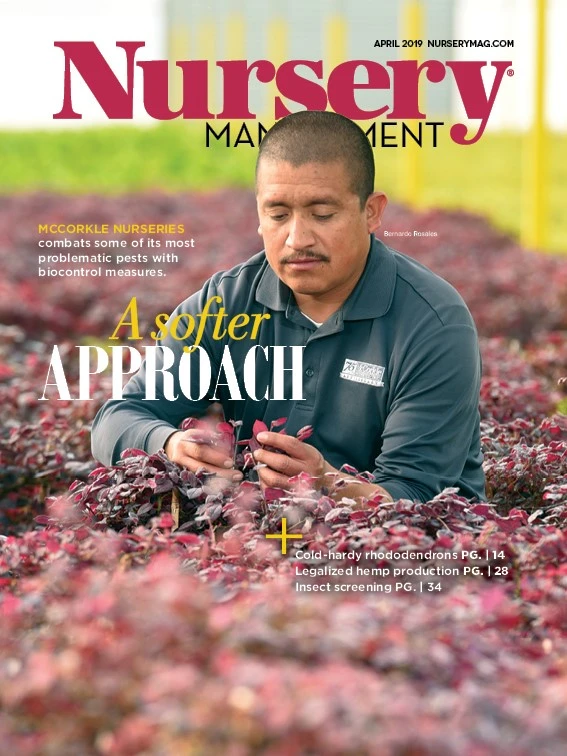
According to research from the University of Washington, trees increase retail sales and attract shoppers from further away.
Shoppers in business districts with robust tree canopy will spend 9-12 percent more for products, travel further and spend more time there, according to Kathleen L. Wolf, research social scientist at the University of Washington.
Shoppers indicate they will travel greater distance to visit a district having high quality trees and spend more time there once they arrive, she reports.
As the communities you serve build new developments, make sure you’re sharing these stats with city leaders, landscape architects and commercial contractors. Growers must be part of the discussion even before the papers are signed and the equipment breaks ground because retail merchants may overlook the indirect and long-term benefits of a quality urban forest and instead focus on costs such as pruning and debris clean up, according to Green Cities: Good Health, a partnership with the University of Washington and the U.S. Forest Service. “Such attitudes can set the tone for program and budget decisions in local government,” reports Green Cities.
Researchers used contingent valuation method (CVM) to learn how much people would be willing to pay for specific environmental services. Green Cities reports that a series of studies has used CVM to explore how shoppers respond to the urban forest across different business settings. Scenarios are presented to study participants in images and drawings, generally comparing a place with a high-quality urban forest canopy to a similar place that is kept up well but contains no trees. Participants are asked what they would be willing to pay for a set of goods and services in each, and their responses are statistically compared. Generally, shoppers are willing to spend more when shopping in pleasing natural settings.
For instance, goods and services in forested business districts in small cities saw price increases of 9 percent, according to Wolf. Goods and services in forested business districts in large cities experienced a price increase of 11-12 percent.
Why are people willing to pay more in these settings?
“A consumer’s expectations regarding shopping experiences begin at the curb, long before entering a store. Features such as storefronts and sidewalk character can create favorable or negative impressions that subconsciously affect shopper behaviors. It appears that a quality urban forest in a district can affect such impressions,” U of Washington reports.
Wolf also found that study participants projected their probable patronage behavior while viewing street and sidewalk scenarios. More positive responses were found for places having trees, compared to no-tree settings, across cities of different sizes. Potential shoppers claim they are willing to travel more often, for longer amounts of time, and over greater distances to shop in a retail district containing trees, and once arriving will spend more time there.
Don’t assume your community leaders and area contractors know this type of data. Get involved and keep spreading the word about the value of trees.
For more: http://depts.washington.edu/hhwb/

Get curated news on YOUR industry.
Enter your email to receive our newsletters.
Explore the April 2019 Issue
Check out more from this issue and find your next story to read.
Latest from Nursery Management
- Sam Hoadley talks about Mt. Cuba Center's latest evaluation of Solidago sp. for the Mid-Atlantic region
- Countdown to shutdown
- From growing plants to growing people
- Weed Control Report
- Advocacy in action
- Rare Life Plants: A place for the unique
- Crisis of confidence
- A letter from the sponsor: Janna Beckerman, Envu







